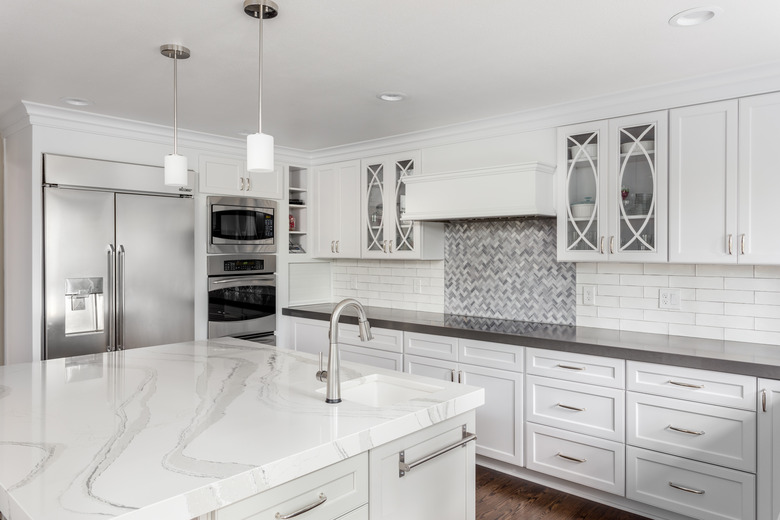Why Is The Outside Of My Fridge Getting Condensation?
A leaking kitchen appliance is almost always a disaster; water seeps into and splits wooden cupboards and fixtures, raises floor tiles and damages nearby electronics, costing you a great deal of money in repairs. Finding water in the form of condensation on outside of refrigerators is therefore a potentially worrying discovery. Understanding what causes this phenomenon will help to allay any fears you might have about malfunctioning appliances and potential repair costs. In some cases, it may be possible to eliminate moisture on the outside of the appliance in just a few hours.
Tip
Condensation on outside of refrigerators may result from high humidity, damaged gasket seals and confined spaces with poor air circulation.
A Refrigerator Sweating Outside
A Refrigerator Sweating Outside
In a humid environment, there is a greater amount of water vapor present in the air. Often expressed as a percentage, relative humidity readings come into play in the summer when a high level of humidity makes air feel "sticky" and hard to breathe for those with respiratory conditions.
When moist vapor-laden humid air passes over a cold surface, some of the water condenses and forms little drops of condensation. This phenomenon is what causes the appearance of moisture on the exterior and interior walls of the refrigerator. You might notice the same effect on the cistern of the toilet or bathroom taps when you run the cold water.
Damaged Gasket Seals
Damaged Gasket Seals
Cracked, split or torn door seals cause water on the outside of the refrigerator, including condensation between French doors refrigerator styles. Open the refrigerator door or doors, and inspect the rubber seal for signs of damage or corrosion. You may need to have the seals repaired or replaced if the damage is sufficiently bad. Contact the manufacturer of the refrigerator for help with purchasing replacement seals.
Poor Air Circulation
Poor Air Circulation
As a general rule, there should be at least an inch of space around all walls of the refrigerator to ensure good air circulation through and around the appliance. Boxing the refrigerator into a confined area or between cupboards may cause "sweat" to appear on the exterior walls. Consider moving or reinstalling the refrigerator to clear this problem.
Energy Saver Cooling Option
Energy Saver Cooling Option
Refrigerators with an energy-saver cooling option sometimes experience condensation when the antisweat heaters are switched off. Try canceling energy-saver mode via the refrigerator's control panel and waiting a few hours to see if the sweat clears. Not all refrigerators have these heaters or an energy-saver mode.
Wait a While
Wait a While
The small droplets of moisture on the outside of the refrigerator are harmless and should not be a cause for concern. Wipe up the excess liquid with a dry cloth if the moisture begins to drip onto the floor or cause a problem. The moisture will clear naturally when the humidity level decreases as the weather changes.
Dehumidify the Room
Dehumidify the Room
It may help to place a portable dehumidifier in the room if the humidity is produced by another appliance — a clothes dryer, for example. Moving the refrigerator or the source of the humid air will also help if the condensation becomes a persistent problem. Ovens and boilers also increase the humidity in the room where they operate.
